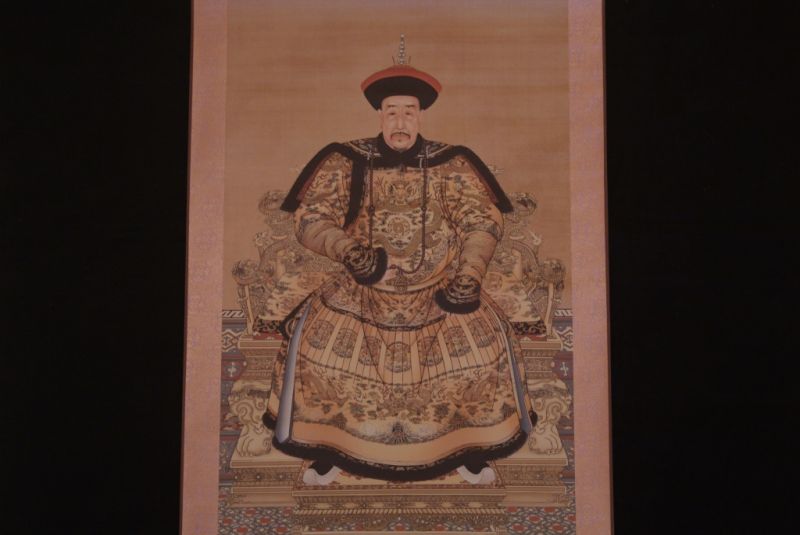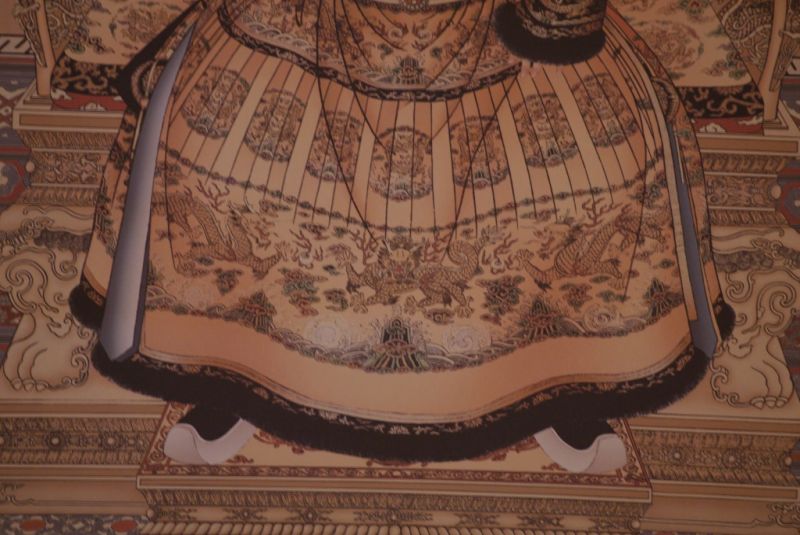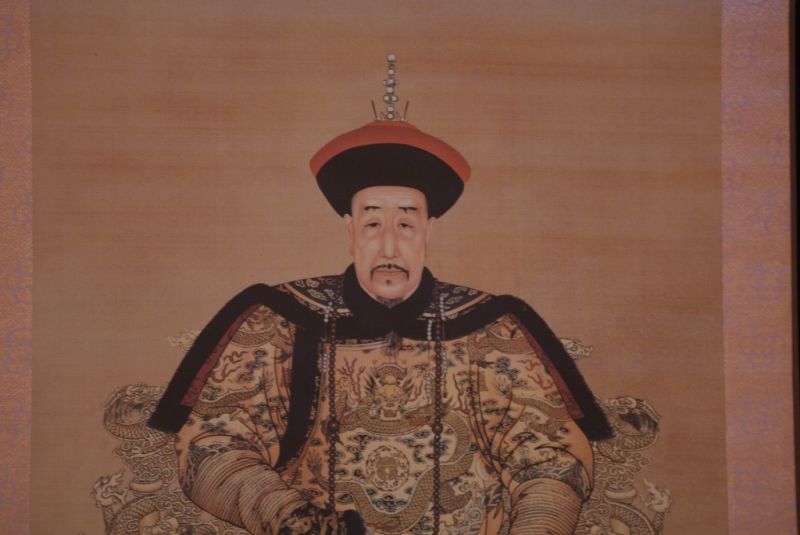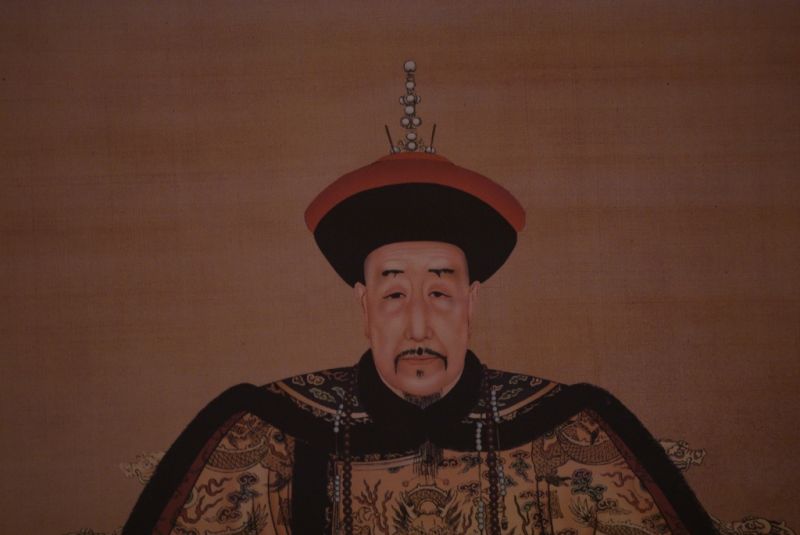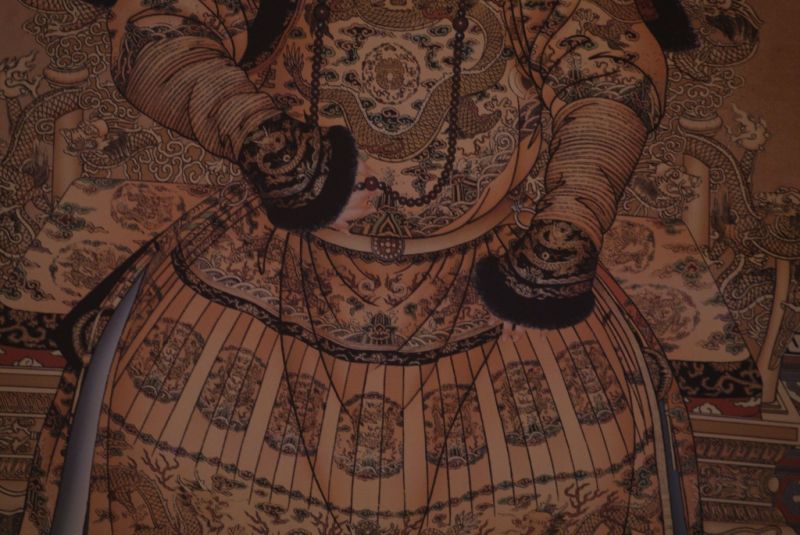Chinese ancestor Nurhaci emperor
Chinese History
- The chinese ancestors respect strict codified criterias. These portraits follow a standard compositional formula, including presentation of the figure full length and seated with a frontal orientation. We can see that according to different ancestors portrait only the face changes however, the facial expression stays the same.
- The Chinese ancestors drawings are made depending on different beliefs as Confucianism, Taoism, Buddhism and peoples religion.
- The Chinese ancestors represents a deceased in a still posture with a festive attire (Chinese dignitaries dress and hat).
- The majority of the portraits are classified as ancestor, or memorial portraits, defined as likenesses painted for the purpose of ritual worship.
- The chinese ancestors are painted by virtue of to two codes : the need for verisimilitude and the desire to embellish the portrait of the deceased.
The structure of the painting:
- This Chinese painting assembled on a wooden tube is called Kakemono
- A Kakemono is a Chinese or Japanese scroll painting or calligraphy mounted usually with silk fabric edges on a flexible backing, so that it can be rolled for storage.
Chinese painting
- This is a Chinese Emperor and an Empress for the Qing dynasty.
- The Chinese Emperor is Nurhaci. He reorganized and united many Manchu tribes and launched an assault on the Ming Dynasty.
- The Chinese Emperess is Xiao Ci Gao.
- The Qing dynasty was the last dynasty of China (ruling from 1644 to 1912).
- This dynasty was founded by the Manchu (Manchuria).
- You will find on this Website one of the most complete series of those Chinese ancestors portraits at the moment in France and Europe.
- Our Chinese Ancestors painting are all in good condition.











